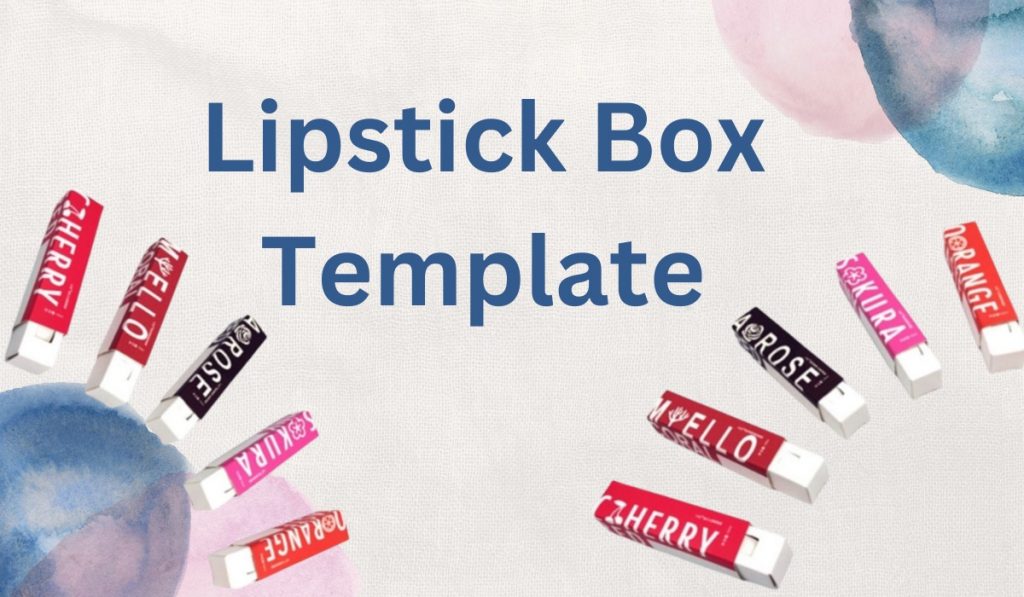Have you ever wanted to create a custom Lipstick Box Template for the perfumer or your own brand of cosmetics? Well, in this article I’m going to show you how to create a professional lipstick box template in Adobe Illustrator. In it, we’ll design our shape, add some text, and edit the colors to create the perfect packaging.
How To Create A Professional Lipstick Box Template?
Professional Lipstick Box Template makes it easy to create a beautiful and professional-looking lipstick box. There are a variety of free and paid templates available online, but the best way to find the perfect template is to create your own. To start, find a design you like or use a template that you think will look good. Once you have your design, print it out on heavy paper and cut out the pieces. First, cut out the top and bottom of the box, then measure in from each end to get the height of the box. Cut out two more pieces from your original design to create the sides of the box.
Next, trace around each piece with a pencil and then cut them out with a sharp knife or scissors. You may need to trim down the edges of each piece if they are too wide or tall. Once all four pieces are cut out, assemble them by lining up the top edge of one piece with the bottom edge of another, then pressing down until they fit together snugly. Glue or tape together if needed.
Once assembled, it’s time to decorate! You can add stickers or ribbon to give your box a unique look, or you can use fabric paint or Mod Podge to fill in any gaps between pieces. Be sure to let your box dry completely before putting in your lipstick!

What are The Most Important Features Of A lipstick Box Template?
A lipstick box template is a great way to showcase your professional lipsticks. Many features make a lipstick box template great, including:
- Layout Options: You can choose from a variety of layout options, such as full-width or half-width boxes, to fit your specific needs.
- Fonts And Colors: You can customize the font and color of the text on the template to match your brand’s look and feel.
- Header And Footer Options: You can add a header or footer to help organize your products and keep track of branding information.
- Printing Capabilities: A lipstick box template can be printed for use in-store or for marketing materials.
Examples of Box Templates:
There are a few different templates that can be used when creating a professional lipstick box. One popular template is the 5×7 card template. This template is perfect for smaller makeups as it doesn’t take up a lot of space and there is enough room to include all of the information needed for customers to purchase your products. Another popular template is the 6×9 card template. This template is perfect for larger makeups as it takes up more space but includes more information such as product descriptions, ingredients, and images.
If you are unsure which template to use, either of the two mentioned above is a great option to get started. However, if you are looking to create a completely custom lipstick box, many different templates can be found online or in print magazines. Once you have chosen the template that best suits your needs, it is important to follow some simple guidelines to create a professional product packaging experience for your customers.
Adding Personal Touches:
Creating a professional lipstick box template can help you organize and store your lipstick collection in an organized way. By following these simple steps, you can create a template that looks great and is easy to use. To create your lipstick box template, start by gathering your materials. You will need a printer, printer paper, Microsoft Word, and a graphics program such as Adobe Photoshop or GIMP.
You can find more information on how to make the template in the following steps. First, print out the template onto printer paper. Make sure that all the pages are printed out correctly before starting to assemble the template.
Next, open Microsoft Word and begin creating a table of contents for the template. Name each section of the document according to its function in the box- like “Front Cover,” “Inside Page 1,” etc. Once you have created the table of contents, save it to your computer. Now it’s time to start assembling the template. To begin, place one page of printer paper at the bottom of your printer tray so that it covers all of the document’s pages when it prints out.
Then place all of the other pages in order from front cover to back cover and center them on top of this first sheet of paper so that they print correctly onto it (see image below). Once everything is correctly centered in the tray and printed out, cut off all excess pages from both sides of the front cover page.







